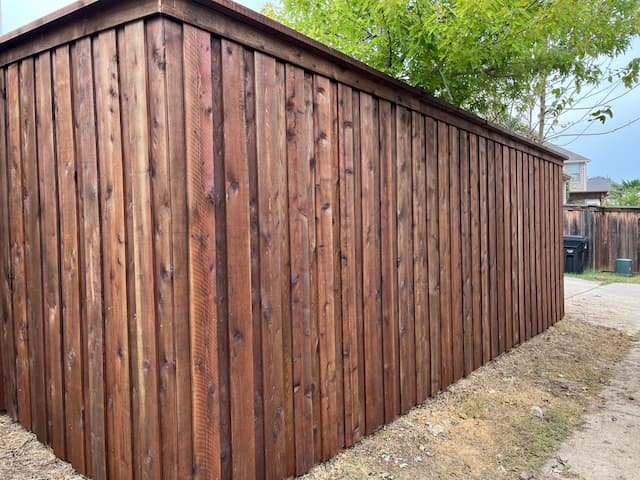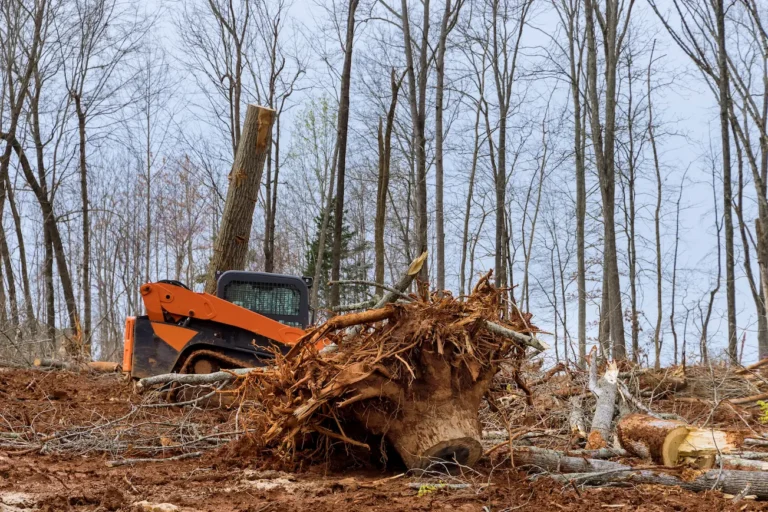Does Stain Protect Wood?
Wood is a timeless material, but it’s no secret that it’s vulnerable to the elements. From UV rays to moisture that promotes rot and decay, untreated wood faces a tough battle. So, does stain protect wood? The short answer: yes, it does. Staining your fence not only enhances the natural beauty of wood but also acts as a protective barrier against weather damage, mold, and fading.
When it comes to preserving the natural beauty of wood, many of us wonder if a simple stain can do the trick. Wood, with its timeless appeal and versatility, often finds itself at the heart of our homes and outdoor spaces. But exposure to elements like sunlight, moisture, and pests can take a toll on its appearance and longevity.
Our customers often ask whether applying a stain is just a cosmetic touch or if it offers real protection. Stains come in various types and formulations, each promising to safeguard wood surfaces. But how effective are they in shielding wood from damage?
Understanding Wood Stains
At our Fence Staining Company, we protect many customer’s fences each year. Wood stains are finishes applied to enhance wood’s appearance and offer varying levels of protection. They penetrate the wood surface, providing color and sometimes defense against external factors.
What Is a Wood Stain?
Wood stain is like giving your wood a facelift with benefits. It’s a mix of pigments and solvents that soak into the wood, changing its color while keeping the natural grain visible. Unlike paint, which sits on top of the surface, stain gets into the wood and adds a natural, polished look.
Types of Wood Stains
Oil-Based Stains:
Oil Based Stains go deep into the wood, giving it rich color and strong durability. They’re great for indoor projects like furniture and floors. They take longer to dry, but the lasting results are totally worth it.
Water-Based Stains:
These dry fast and are super easy to clean up. They’re perfect for projects that need to get done quickly, like trim or doors. Plus, they’re low on odor and eco-friendly.
Each type has its purpose, helping you find the right fit for your wood project while boosting its beauty and protection.
How Stain Protects Wood
Stain isn’t just for looks. It works to protect your wood from the elements, like water and sunlight, that can damage it over time.
Moisture Protection:
Stains block water from soaking in, stopping things like warping, cracking, and rot. This is especially important for outdoor wood, like fences or decks.
UV Protection:
Sunlight can fade wood and make it look dull over time. Stains with UV blockers absorb harmful rays and keep the wood’s color fresh for longer.
Stain vs. Other Treatments
Stain vs. Paint:
Stains soak into the wood and show off its natural beauty, while paint creates a solid layer that covers the grain completely. Paint lasts longer but might peel if it’s not maintained. Stains need more upkeep but let the wood breathe, which reduces cracking.
Stain vs. Sealant:
Stains add color and some protection, while sealants are all about waterproofing. Using both can give you the best of both worlds: beauty and durability.
Choosing the Right Stain
Match the Wood:
Some woods, like oak, take stain easily. Others, like pine, can absorb unevenly and may need a pre-stain treatment to avoid blotches.
Think About the Weather:
If the wood will face a lot of sun, go for a stain with UV protection. For rainy or humid areas, choose an oil-based stain that keeps water out.
Applying Stain the Right Way
Good prep and careful application make all the difference. Sand the wood to ensure it absorbs the stain evenly. Apply thin coats and follow the drying instructions for the best results.
Staining isn’t just a way to make wood look nice. It’s how you protect and preserve it. Pick the right stain, apply it carefully, and your wood will stay strong and beautiful for years to come.
Conclusion
After exploring the role of stains in wood protection, it’s clear that stains aren’t just about aesthetics. They offer essential protection against environmental threats like moisture and UV rays, preserving wood’s integrity and beauty. Choosing the right stain and fence contractor involves understanding the specific needs of your wood and environment. By doing so, you can ensure that your wood surfaces remain durable and visually appealing for years. Whether you’re using oil-based stains for moisture resistance or UV-blocking stains for sun protection, the key is regular maintenance and proper application. With the right approach, stains can effectively safeguard your wood while enhancing its natural charm.






